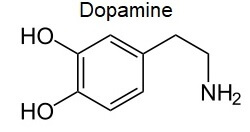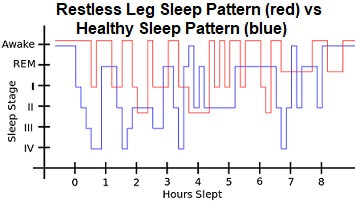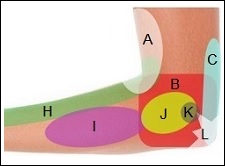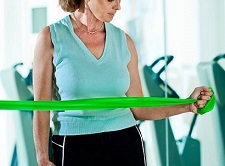- Home
- Common Shoulder Problems
- Restless Arm Syndrome
Restless Arm Syndrome
Written By: Chloe Wilson BSc (Hons) Physiotherapy
Reviewed By: SPE Medical Review Board

Restless arm syndrome is a problem in the central nervous system that causes abnormal movements and sensations in the arms.
Sufferers of restless limb syndrome usually complain of strange sensations in the arms such as crawling or tingling sensations, involuntary jerky arm movements, an urge to move the arms and disturbed sleep.
Symptoms may be confined to the arms, or may affect other parts of the body as well.
The condition is related to the more commonly known condition restless leg syndrome, although a more accurate description is probably “restless limbs”, as while it is most commonly known for affect the legs, the arms, elbows and hands can also be affected.
Here we will look at the common causes of restless arm syndrome, common symptoms, diagnosis, treatment options and the long term prognosis of the condition.
Causes Of Restless Arm Syndrome
In many cases, there is no known specific cause of restless arm syndrome. Doctors think it may be due to:
- Genetics: It is thought that there is a familial link in over 50% of cases of restless limbs. It is an autosomal dominant condition meaning that if you suffer from it, there is a 50% chance you will pass it on to any child you have

- Dopamine Imbalance: Dopamine is a chemical neurotransmitter that passes messages between the brain and the nervous system which helps to control and co-ordinate movement. If dopamine levels drop, it may cause muscle spasms or the arms to move involuntarily
- Underlying Health Condition: There are a number of medical conditions associated with restless arm syndrome including Parkinson’s Disease, chronic kidney disease. Vitamin 12 deficiency and fibromyalgia
- Iron Deficiency Anaemia: Low levels of red blood cells results in reduced iron levels which leads to a drop in dopamine levels
- Pregnancy: Around 40% or pregnant women get symptoms of restless leg syndrome which may also cause symptoms in the arms. This is most common in the third trimester although no one knows why. Symptoms usually settle within a few days/weeks of giving birth
Potential Triggers
Triggers are things that don’t necessarily cause restless arm syndrome directly but can make symptoms worse. Triggers for restless arm and leg syndrome include:

- Medications: such as anti-depressants, anti-histamines, antipsychotics and calcium channel blockers
- Caffeine: people often find that consuming caffeinated drinks such as tea, coffee or coca cola make their symptoms worse or more frequent
- Lack of Exercise: Whilst too much exercise can be unhelpful, not enough can also trigger restless arm syndrome
- Stress: stress and anxiety can trigger an attack of restless arm syndrome
Classification Types
Restless arm syndrome can be categorised into two different types:
- Primary Restless Arm Syndrome: aka idiopathic restless limb syndrome has no known cause. The condition usually develops slowly, with symptoms appearing before the age of 40 – 45 years. There is usually a genetic element. Symptoms tend to come and go, although they may last a few months at a time, and the condition tends to get gradually worse as you get older
- Secondary Restless Arm Syndrome: Secondary restless limb syndrome usually develops suddenly, and tends to be associated with another medical condition or certain medications. Symptoms tends to first appear over the age of 45 but do not worsen with time
Restless Leg Syndrome affects approximately 5-10% of the population and approximately one quarter of those sufferers will also be affected by restless arm syndrome symptoms.
Symptoms of Restless Arm Syndrome
Restless arm syndrome is a spectrum disease, meaning that the symptoms can vary greatly from person to person in both severity and frequency. Symptoms range from mild to unbearable and from occasionally to daily. Symptoms may include:
- Involuntary Arm Movements: People tend to experience sudden, jerky, uncontrollable movements in the arms, and in some case other body parts as well, most commonly the legs
- Odd Sensations: People with restless arm syndrome often report feeling strange sensations in their arms such as tingling, burning, numbness, tickly, buzzing or itching sensation or like a creepy crawly crawling over you. The strange sensations associated with restless limbs can also give you a strong urge to want to move
- Daily Pattern: Symptoms of restless limbs tend to be worse in the evenings and overnight or when resting or relaxing. As a result, sleep is often affected. Some people get symptoms throughout the day, but they tend to be least in the mornings
- Sleep Disturbance: Restless limb syndrome often affects sleep. The strange sensations on involuntary arm movements can make it difficult to get to sleep, to reach deep sleep and may wake you up.
A vicious cycle can develop - symptoms are often worse when you are tired, but as a result it is harder to get a good nights sleep, so you get even more tired and the cycle continues - Difficulty Sitting Still: People often find that their symptoms come on when they sit still for long periods e.g. on a car/train journey or when watching television
- Relief With Movement: People often find that moving their arms, doing some simple exercises or rubbing/massaging their arms can help to reduce symptoms
- Periodic Limb Movement Disorder (PLMD): Many people restless arm syndrome will experience periodic limb movements at night. This is where the arm jerks or twitches uncontrollably, briefly but repetitively. They tend to happen when you are asleep and may wake you and your partner up. You can also get periodic limb movements when you are awake but this is less common
Diagnosing Restless Limbs
There is no specific test for diagnosis restless limb syndrome and it can take a long time to get a definitive diagnosis. Your doctor will usually run various tests to rule out other conditions such as vitamin deficiency or other neurological conditions. They will want to get a clear picture of your symptoms including frequency, duration, daily pattern and intensity.
The National Institute for Neurological Disorders & Stroke highlight four criteria for diagnosing restless limb syndrome:
- Symptoms worse at night with minimal or no symptoms in the morning
- A strong, often overwhelming need to move the affected limb(s)
- Sensory symptoms that are triggered by rest, relaxation or sleep, and
- Sensory symptoms that ease with movement – symptom relief persists as long as the limb is kept moving
If you are diagnosed with restless arm syndrome, you should have your iron levels checked.
#CommissionsEarned from Amazon on qualifying purchases
Treatment Options
Treatment for restless arm syndrome looks to reduce the symptoms of the condition such as the intensity and/or frequency of symptoms, including how much sleep is affected. Treatment may include:

- Medication: Drugs to help increase the levels of dopamine, known as dopaminergic agents, can be very effective and tend to be the tried first however care must be taken as long term use can actually make symptoms worse. Other medications that may be prescribed include levodopa for occasional symptoms, opioids such as codeine and anti-convulsants such as gabapentin.
Beware, some medications can make the symptoms of restless limbs worse in some individuals including sedating anti-histamines, cold and ‘flu remedies, anti-depressants, antacids and tricyclic medications
- Supplements: Supplements such as iron, magnesium and folate can help reduce symptoms, although they are only recommended if your levels are low – always consult your doctor before taking any supplements
- Sleep Pattern: Having a regular sleep pattern can help with restless arm syndrome. Adopt good habits – try to go to bed at around the same time each evening and also get up at a consistent time in the mornings. Allow yourself time to wind down in the evening.
Make sure your bed is for sleep only, not working or looking at screens. Make sure the room is the right temperature – symptoms can be worse if you are too hot. Symptoms are often worse when you are tired. Some people find it helpful to keep a sleep diary - Watch Your Intake: Cutting down your intake of caffeine, alcohol and tobacco can help reduce the symptoms of restless arm syndrome - definitely avoid them completely after 6pm
- Exercise: Taking regular, but not excessive exercise during the day and stretching before you go to bed can help to reduce symptoms – visit the arm stretches section for exercises that may help
- Movement: Moving the affected limb usually helps to relieve symptoms almost instantly, but symptoms may return quickly once you stop. It may help to walk around as well
- Massage: Massaging or rubbing the arms when symptoms of restless arm syndrome develop can help reduce symptoms
- Treatment Of Underlying Disease: If another medical condition is contributing to your restless arm syndrome, such as diabetes, then treating that condition will usually reduce symptoms
- Use Hot Or Cold: Some people find that applying heat packs or ice packs to their arms, or alternating between the two helps to reduce their symptoms. Ensure you do this safely - only use for ten minutes at a time and do not use if your sensation is altered
- Bath/Shower: Some people find that having a warm or cool bath or shower before bed helps to relax both your muscles and you!
Likely Prognosis
The symptoms of restless arm syndrome may gradually get worse over time although this is more common in the primary form. Symptoms often fluctuate and may disappear completely for periods but in most cases they will return after a few weeks or months. It is important to rule out an underlying condition. If you suspect you may be suffering from restless limbs, do see your doctor.
What Else Can Help?
There are a number of other things that can cause shoulder and arm pain. If you don't think restless arm syndrome sounds like your problem, visit the shoulder conditions & injuries section.
If you are getting strange sensations in your arm, there may actually be a problem with the nerves rather than restless arm system - have a look at the arm nerve pain article to find out more. Alternatively, check out our shoulder pain diagnosis charts and elbow pain diagnosis charts for help working out what's wrong.
Related Articles
References
- Restless Legs Syndrome - Medline Plus
Page Last Updated: May 21st, 2024
Next Review Due: May 21st, 2026





